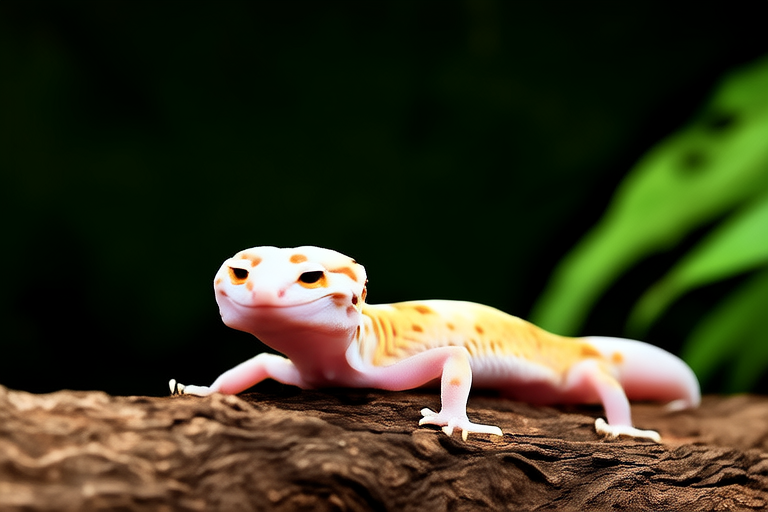Chasing Myths: Debunking Common Misconceptions About Chameleons
Chameleons have long been objects of fascination, captivating our imagination with their striking appearance and peculiar behaviors. These lizards are known for their vibrant colors, prehensile tails, and independently rotating eyes. Their ability to change color is perhaps the most iconic feature, leading to countless myths and misconceptions. In this article, we will explore the truth behind some of the most common myths surrounding chameleons, providing you with accurate information to better understand these fascinating creatures.
The Fascination with Chameleons
Chameleons belong to the family Chamaeleonidae, which includes approximately 200 species distributed across Africa, Madagascar, southern Europe, and southern Asia. They are known for their unique physical adaptations that make them well-suited to their arboreal lifestyle. Their feet are divided into two groups of toes that help them grasp branches firmly, while their long, sticky tongues can extend up to twice their body length to catch prey. The most intriguing aspect, however, is their ability to change color. This adaptation serves multiple purposes beyond just camouflage, including communication and temperature regulation.
Myth 1: Chameleons Change Color to Match Their Surroundings
One of the most widely held beliefs about chameleons is that they can change color to match their surroundings. While it’s true that chameleons can alter their pigmentation, they don’t do so to blend into their environment like a chameleon-themed spy novel might suggest. Instead, color changes are primarily used for communication and thermoregulation. The chameleon’s skin contains specialized cells called chromatophores, which contain different pigments. By expanding or contracting these cells, chameleons can display a wide range of colors and patterns. For instance, males may show bright colors during courtship displays or aggressive encounters, while darker hues may be used to absorb more heat from the sun.
Myth 2: Chameleons Can Only See in One Direction at a Time
Another misconception about chameleons is that they can only see in one direction at a time because their eyes move independently. However, this is far from the truth. Each eye of a chameleon can rotate almost completely around, allowing them to have a nearly 360-degree field of vision. This remarkable adaptation enables chameleons to scan their surroundings efficiently, detecting potential threats or prey without moving their head. Despite their independent eye movement, chameleons can also focus both eyes on the same object, enhancing depth perception when necessary.
Myth 3: Chameleons Live Primarily on a Diet of Plants
Many people mistakenly believe that chameleons are herbivorous or omnivorous animals. In reality, chameleons are strictly carnivorous, feeding mainly on insects such as crickets, grasshoppers, and locusts. Their diet is crucial for their health and growth, as it provides essential nutrients and proteins. It’s important for owners of pet chameleons to offer a varied diet that mimics what they would find in the wild. Additionally, supplementing their food with calcium and vitamin D3 is necessary to prevent metabolic bone disease, a common health issue in captive chameleons.
Myth 4: Chameleons Can Survive Without Water
Contrary to popular belief, chameleons require regular access to water for hydration. Although they are adapted to arid environments, chameleons still need to drink water to maintain proper bodily functions. In the wild, they obtain water droplets from leaves after rainfall or dew. Captive chameleons should be provided with a shallow water dish or misted regularly to ensure they stay hydrated. Dehydration can lead to serious health problems, so it’s essential to provide fresh water daily and monitor your chameleon’s drinking habits.
Myth 5: Chameleons Are Easy Pets for Beginners
Despite their popularity as exotic pets, chameleons are not recommended for beginners. Caring for a chameleon requires specific knowledge and experience in reptile husbandry. Their care involves maintaining optimal humidity levels, providing appropriate UVB lighting for calcium absorption, and ensuring a suitable enclosure size. A poorly maintained habitat can lead to stress, illness, and even death. Before adopting a chameleon, prospective owners should thoroughly research their needs and consult experienced keepers or veterinarians.
Tips for Responsible Chameleon Ownership
If you’re considering owning a chameleon, here are some tips to ensure their well-being:
- Proper Enclosure: Provide a spacious cage with plenty of vertical space for climbing. Use branches, vines, and other structures to create a natural environment.
- UVB Lighting: Install full-spectrum UVB bulbs to support calcium metabolism and prevent metabolic bone disease.
- Diet: Feed your chameleon a variety of live insects and dust them with calcium and vitamin supplements.
- Hydration: Mist the enclosure daily and provide a shallow water dish for drinking.
- Handling: Handle your chameleon gently and infrequently to avoid stressing the animal.
The Importance of Understanding Chameleons Correctly
Understanding chameleons accurately is vital for promoting their welfare and appreciation. By dispelling common myths and educating ourselves about these remarkable creatures, we can foster a greater respect for chameleons and contribute to their conservation. Whether you’re a seasoned herpetologist or a curious novice, learning about chameleons allows us all to marvel at their complexity and beauty.
By embracing the truth about chameleons, we can work towards creating environments where these unique animals can thrive both in captivity and in the wild. Let’s continue to chase down myths and uncover the real stories behind these captivating creatures.
